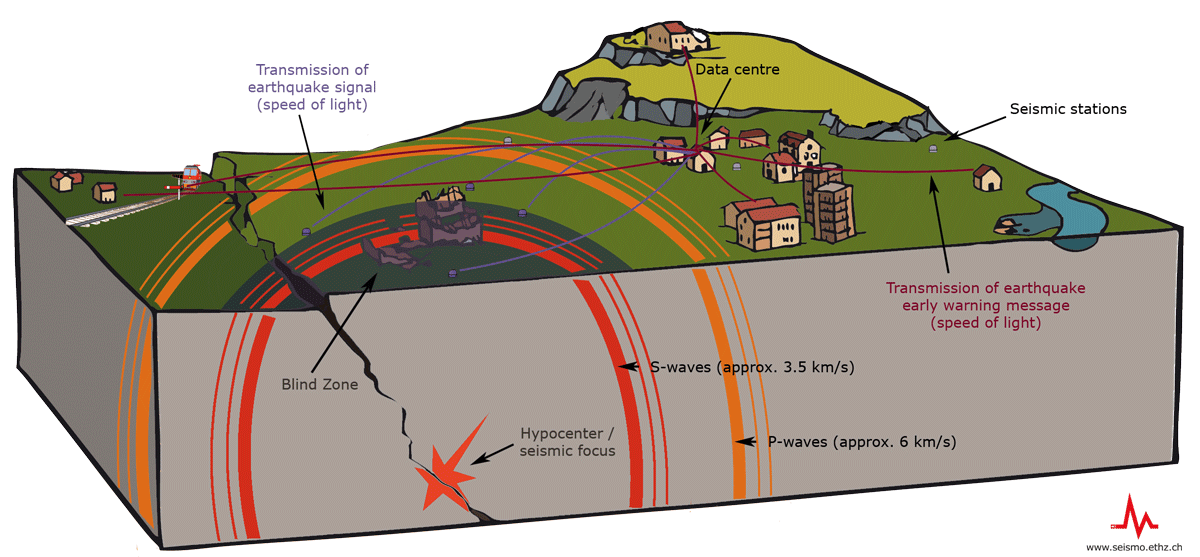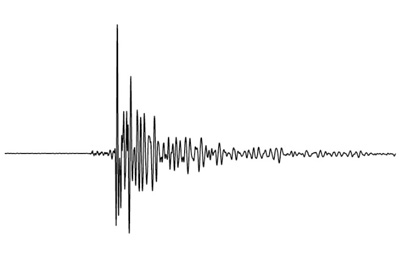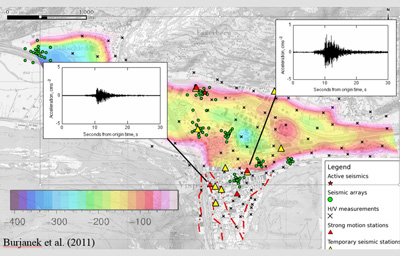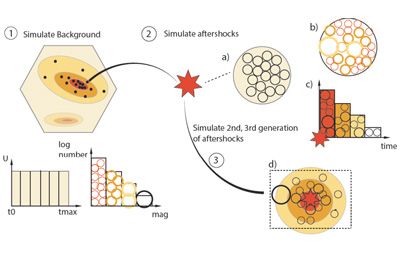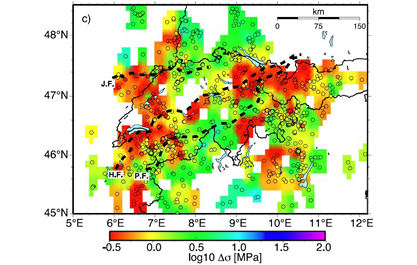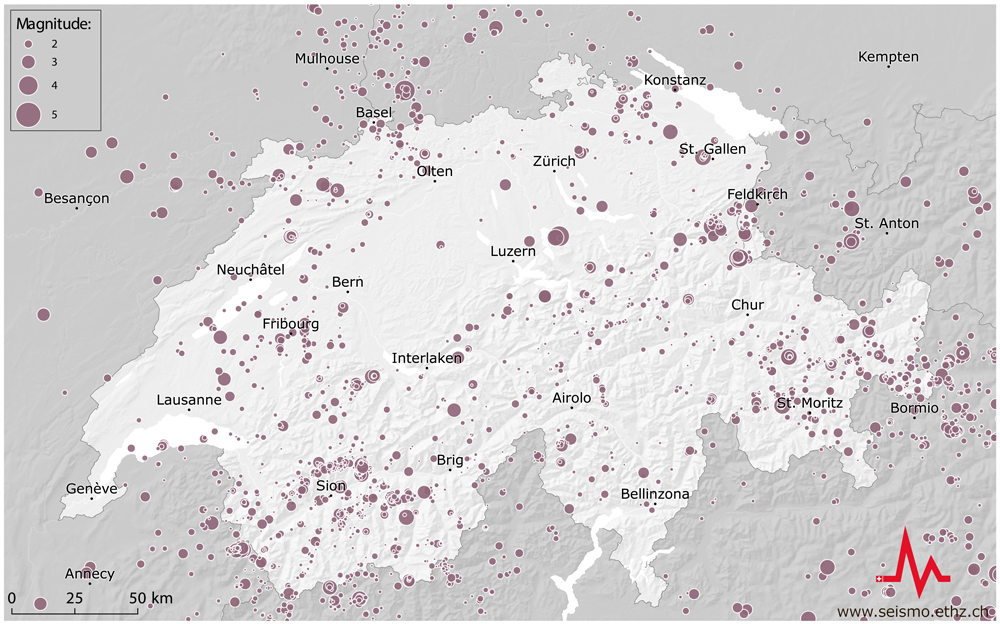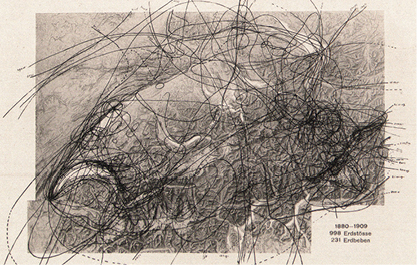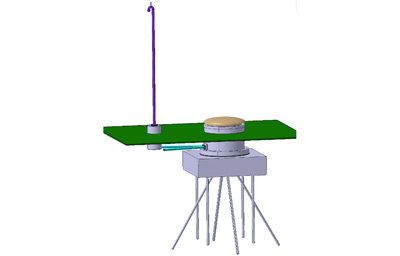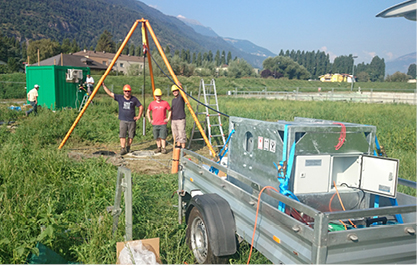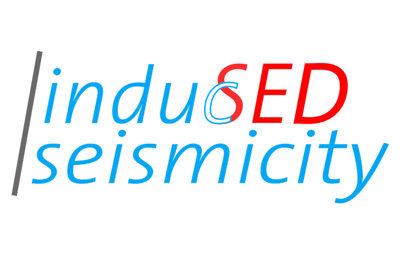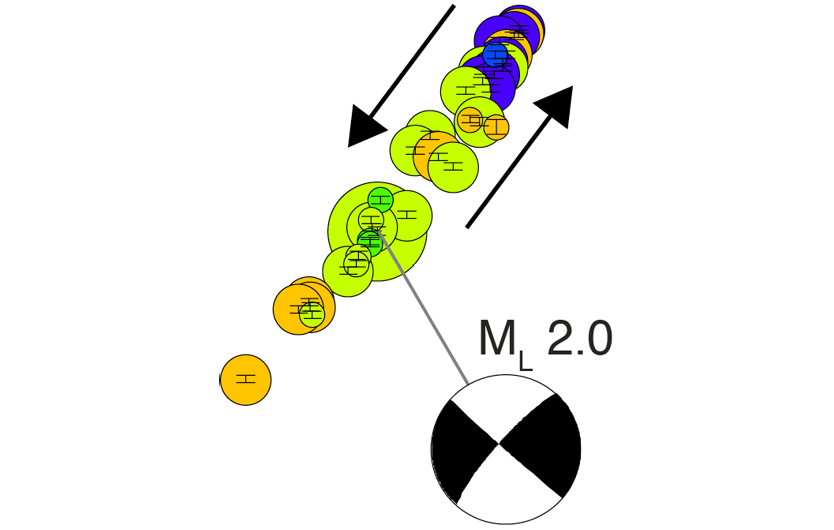Fields of Research
Conducting seismological research is one of the core duties fulfilled by the Swiss Seismological Service (SED) at ETH Zurich, and most of its staff play a role in this work. Many projects necessitate close cooperation with other groups of researchers at ETH Zurich and abroad.
The main aim of research conducted at the SED is to gain a clearer understanding of earthquakes and their consequences and thereby contribute towards improving the response to such natural hazards, which pose a threat worldwide. At the same time, we seek novel ways of using seismological methods to find out more about fundamental processes that shape the Earth. How are the Alps formed? How stable are slopes? How do glaciers move? How can earthquakes induced by geothermal power projects be curbed? What kind of a threat do faults pose to permanent waste repositories? How strongly does the ground shake during an earthquake? How can we forecast earthquakes (more accurately)?
The fields of research listed here highlight domains in which the SED is particularly active and afford an insight into its wide range of activities.
Fields of Research
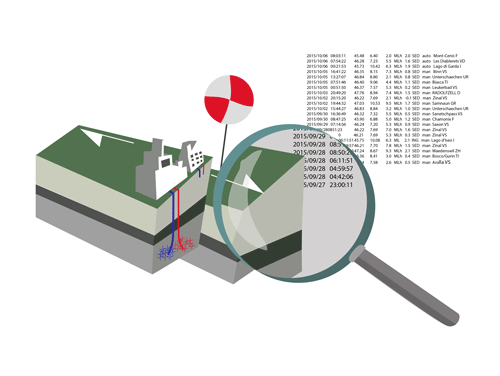
Earthquake Early Warning
Earthquake Early Warning (EEW) aims to provide warning that shaking from an earthquake is expected before it actually arrives. EEW can be used to protect vulnerable infrastructures using automated shutdown procedures, and to save lives if the general public is notified about imminent strong ground shaking and trained to respond appropriately. EEW is not earthquake prediction, as the earthquake has already begun. In normal cases EEW can only provide up to a handful of seconds warning time.
Realtime Monitoring
The dense Swiss seismic network provides realtime information on ground shaking across Switzerland. The realtime monitoring group operate the automatic software that finds and characterises earthquakes within 10’s of seconds after they occur, and provides alerts to relevant authorities and the public. Other seismological tools we provide include ShakeMaps that show how ground shaking was produced across the country. The group also actively researches earthquake early warning tools.
Engineering Seismology
Engineering seismology lays the bases for calculating seismic hazard, and includes producing catalogues of historical and instrumental earthquakes, reliable ground motion mitigation models and high-definition geological underground models and interpreting historical accounts. Engineering seismologists produce local seismic hazard maps (microzonation) and link the results to data on building vulnerability so that dependable risk assessments can be carried out.
Statistical Seismology
Rather than examining individual earthquakes, we (the statistical seismology group) study earthquake sequences and, more generally, seismicity—the distribution of earthquakes in space, time, and magnitude. We are interested in how earthquakes cluster and how they interact with each other. We want to know the expected size of the largest earthquake in a region in a given period, and we want to understand how seismicity will affect residents.
Numerical Modeling
Earthquakes are modeled when there are no instrumental recordings, i.e. particularly for large, damaging earthquakes and sites close to seismic sources. One way of doing this is to calibrate site-specific ground motion attenuation models. Another is to use deterministic modeling of the rupture process and of wave propagation for scenario earthquakes. However, local geological properties must always be properly factored in.
Seismicity in Switzerland
The Swiss Seismological Service (SED) pinpoints the location of between 1'000 and 1'500 earthquakes every year, but very few of them are strong enough to be felt by the local population. The vast majority of earthquakes recorded in Switzerland occur in the Swiss Alps, especially in the cantons of Valais and Grisons, and as a first approximation, they can be said to result from collisions between the European and African lithospheric plates.
Historical Seismology & Palaeoseismology
Data on earlier earthquakes provide important information for anticipatory mitigation measures and enable us to pinpoint where events occurred and estimate their magnitude. Damaging powerful earthquakes are relatively rare in Switzerland, so no instrumental data on them are available yet. Consequently, we have to draw on chronicles from the past, analyse this information using historical methods, and use palaeoseismological methods to interpret geological traces of major earthquakes.
Strong Motion Seismology & Site-Specific Effects
In a bid to improve the analysis of the seismic hazard facing Switzerland, by 2019 the Swiss Seismological Service (SED) aims to have renewed its Swiss National Strong Motion Network (SSMNet). Each station will take geophysical and geotechnical measurements to determine the properties of the local geological underground, enabling us to interpret any features captured on earthquake recordings. To this end, we developed special measurement procedures, some of which are based on analysing seismic noise.
Earthquake-induced phenomena
Earthquakes are not the only events that cause damage to buildings and infrastructure: secondary earthquake-induced phenomena can wreak havoc as well, for example through soil liquefaction, landslides and tsunamis triggered by undersea landslides. Accordingly, one aim of our earthquake research is to characterise such phenomena with a view to seismic hazard analysis and the recognition of early indications of mass wasting (ground movements) based on giveaway seismic signals. Other phenomena to watch for are short-term foreshocks prompted by processes in the Earth's crust, which can produce characteristic electromagnetic and geochemical signals.
Induced Seismicity
Man-made earthquakes are referred to as induced seismicity. In general these are tiny rupture processes (microearthquakes) that occur in all kind of geotechnical operations, and can only be detected by highly sensitive instruments. Occasionally, however, induced earthquakes are strong enough to be felt or even to cause damage in their epicentral areas. This is why induced seismicity has to be considered a non-negligible risk in larger-scale geotechnical operations, especially in densely populated countries like Switzerland. The processes and conditions underpinning induced seismicity are still not sufficiently well understood to make useful predictions as to the likely seismic response of the underground to these geotechnical operations. The SED's research group on induced seismicity tries to close this knowledge gap by addressing the problem form various angles.
Seismotectonics
Seismotectonic studies the relationship between earthquakes, faults, and tectonic processes. It incorporates information from various disciplines including seismology, geodesy, and geology. The analysis of seismological data provides information on the geometry and the sense of motion of earthquake ruptures. The joint interpretation of many earthquakes allows conclusions on the tectonic stress regime, which is, in combination with information on fault orientations, fundamental for providing estimates on the seismic hazard of a region.
